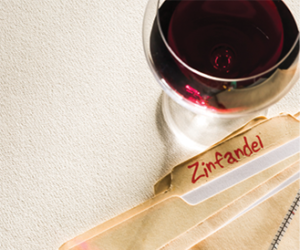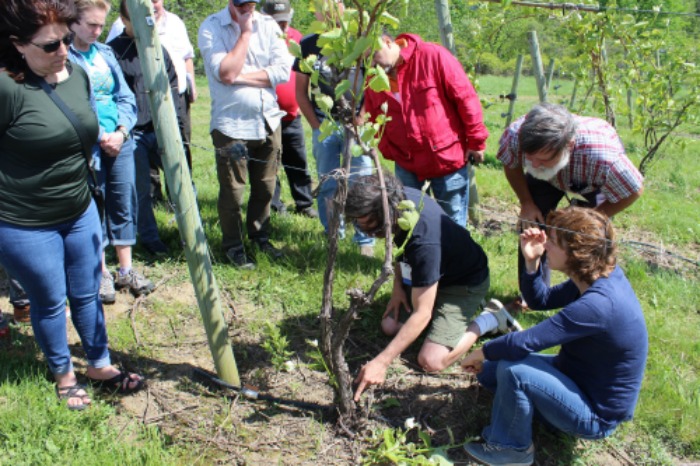When life gives you apples …
Get tips on making various apple wine styles from the winemakers at Door Peninsula Winery (who makes sweet and a dry, barrel-aged version), Brookview Station Winery (semi-dry) and Domaine Pinnacle (apple icewine).
 Paul Santoriello has been involved in all facets of the wine industry including vineyard work, research, sensory analysis, and wine analysis. He earned a degree in plant biology with an emphasis on viticulture from UC-Davis and has held positions at The Wine Lab in Napa and E.J. Gallo before leaving California for Wisconsin to become the Head Winemaker at Door Peninsula Winery in Sturgeon Bay, Wisconsin.
Paul Santoriello has been involved in all facets of the wine industry including vineyard work, research, sensory analysis, and wine analysis. He earned a degree in plant biology with an emphasis on viticulture from UC-Davis and has held positions at The Wine Lab in Napa and E.J. Gallo before leaving California for Wisconsin to become the Head Winemaker at Door Peninsula Winery in Sturgeon Bay, Wisconsin.
Our original fruit wines are all generally made into a sweet wine style including our Sweet Apple wine. On the opposite end of the spectrum I released an apple wine that was fermented dry and barrel aged to show that not all fruit wines need residual sugar, and they can work with food just as well as grape wines.
I want to make a wine that will complement the juice character. For some wines like apple, you can’t determine the exact style until you taste and analyze the juice for the first time. Specifically, I look at color, tannin load, acidity, starting Brix and flavor to best determine the style I want to make. In the best years, apple juice tastes like Chardonnay press fractions and will have balance in the mouthfeel. But in light baring, cold, or wet growing years the juice is thin and your finished wine will lack mouthfeel. You need to make adjustments to style by adjusting alcohol and sweetness.
If you have a great juice blend, it’s best to co-ferment because it becomes integrated; especially to correct acid in the juice instead of the wine for the same reason. If you have multiple tanks to accommodate different single-varietal juice, make single batches with the intention of blending the final wine.
We currently use 55–60 gallon (208-227 L) barrels to age apple and cherry wines. The juice goes into barrel dry with a residual sugar of 0.4% or less. They come out 0 °Brix or higher because of the oak solids in solution.
At home, remember to always rinse your apples to avoid orchard compounds reacting and remaining in your wine. Some fungicides that are applied affect yeast fecundity. In the case of malolactic fermentation, only do partial and control with temperature, malic additions, and SO2. If you don’t have barrels, try 2–4 medium toast French oak cubes per bottle and remove them before serving.
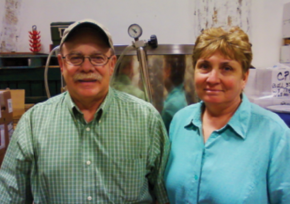
Edward H Miller, Goold Orchards and Brookview Station Winery, Castleton, New York
We make a European-style fruit wine that is similar to a Riesling using several apple varieties to give it a better flavor profile and more dimension. We have tried single varietals in the past and found them to be flat in flavor without much dimension.
We are a commercial fruit farm and we harvest when the varieties are mature based on measuring Brix to determine what alcohol the wine would potentially finish at. After harvest we keep the apples in cold storage as they give a better yield when cold. We also make sure they are sound apples — meaning without rot. We use apples that have been sorted by the packinghouse. We do not use drops in our juice production. All of the apples are washed and brushed before they are pressed.
Apple wine requires some adjustments to the juice. We add tannins, acid blend and yeast nutrients before adding the yeast. We add sugar to reach the Brix that will produce the percentage of alcohol we want to obtain at the end of fermentation. Sometimes we sweeten back, but it depends on how the wine finishes. In total, it takes 4 to 6 months to reach a finished wine for bottling.
For home winemakers our best advice, and I cannot stress this enough, is to use food-grade containers. We frequently fill pails for home fermenters and refuse to fill an item that is not food-grade. Secondly, remember to shut down your fermentation completely before you bottle to avoid explosions.
 Dara Djaldi is the Production Director and head of R&D for Domaine Pinnacle, in Frelighsburg, Quebec. He is responsible for operations and production management at the factory, as well as research and development of new products. Dara holds a Ph.D in biotechnology of food production with specialization in alcoholic and non-alcoholic beverages and winemaking technology.
Dara Djaldi is the Production Director and head of R&D for Domaine Pinnacle, in Frelighsburg, Quebec. He is responsible for operations and production management at the factory, as well as research and development of new products. Dara holds a Ph.D in biotechnology of food production with specialization in alcoholic and non-alcoholic beverages and winemaking technology.
At Domaine Pinnacle, we use six apple varieties for our ice apple wines: McIntosh, Cortland, Spartan, Empire, Lobo, and Golden Delicious. All of our ice apple wines are made from an exclusive blend of the different varieties taking into account the complementary nature between the sweetness, acidity and aromatic qualities to create a well-balanced finished product. Each variety is individually fermented in steel tanks for 6-8 months.
We harvest apples when they have reached a degree of ripeness between 4–7 when using the cryoconcentraetion method (where the apples are harvested late in the season, stored until winter then pressed and the sugar from the juice is concentrated by the natural cold outside) or we leave the fruit on the tree until winter using the cryoextraction method (where the apples are picked in the winter and pressed frozen, or the apples are picked ripe and frozen outside in the winter before their pressing). We look for a degree of Brix from 36–39 and a pH of 3.34–3.42 before fermen-tation and the other parameters (methanol < 400 mg/L, volatile acidity < 1,1 g/L H2SO4, ethyl acetate < 40 g/L, etc.) are determined during or after the alcohol fermentation.
The difference in making ice apple wine stems when having a concentration of apple sugars due to natural cold. The winemaking technique is no different.
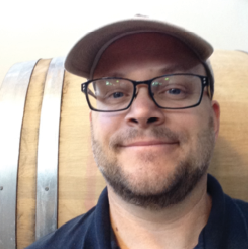 Paul Santoriello has been involved in all facets of the wine industry including vineyard work, research, sensory analysis, and wine analysis. He earned a degree in plant biology with an emphasis on viticulture from UC-Davis and has held positions at The Wine Lab in Napa and E.J. Gallo before leaving California for Wisconsin to become the Head Winemaker at Door Peninsula Winery in Sturgeon Bay, Wisconsin.
Paul Santoriello has been involved in all facets of the wine industry including vineyard work, research, sensory analysis, and wine analysis. He earned a degree in plant biology with an emphasis on viticulture from UC-Davis and has held positions at The Wine Lab in Napa and E.J. Gallo before leaving California for Wisconsin to become the Head Winemaker at Door Peninsula Winery in Sturgeon Bay, Wisconsin.

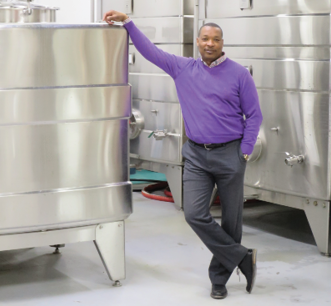 Dara Djaldi is the Production Director and head of R&D for Domaine Pinnacle, in Frelighsburg, Quebec. He is responsible for operations and production management at the factory, as well as research and development of new products. Dara holds a Ph.D in biotechnology of food production with specialization in alcoholic and non-alcoholic beverages and winemaking technology.
Dara Djaldi is the Production Director and head of R&D for Domaine Pinnacle, in Frelighsburg, Quebec. He is responsible for operations and production management at the factory, as well as research and development of new products. Dara holds a Ph.D in biotechnology of food production with specialization in alcoholic and non-alcoholic beverages and winemaking technology.
